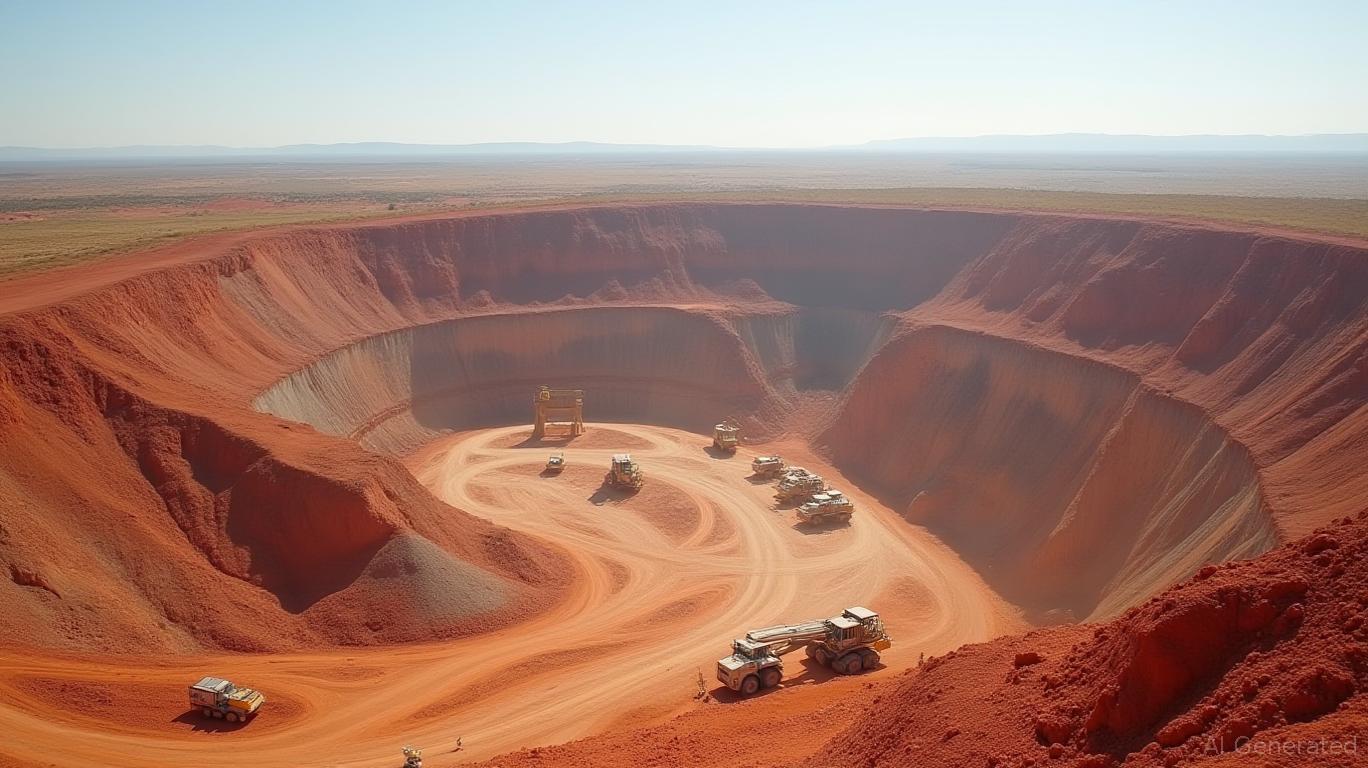Australian Equities: Navigating Stagnation Through Sectoral Resilience and Policy Tailwinds
The Australian economy in mid-2025 finds itself at a crossroads. While overall business conditions stagnate, sectoral divergences reveal opportunities for investors willing to parse the noise. Mining and transport sectors, buoyed by policy support and global demand, are emerging as pillars of resilience, while retail and wholesale remain mired in uncertainty. This article dissects the landscape to identify tactical entry points and cautionary zones in the current environment.
Mining: The Anchor of Growth, Despite Near-Term Volatility
The mining sector's Q1 2025 inventory surge (+3.5%) signals a strategic bet on future commodity demand, even as profitability dipped in late 2024. Despite a dip in business conditions in April 2025—driven by rising input costs—the sector's long-term trajectory remains robust. Key players like BHP and Rio Tinto are positioned to capitalize on a rebound in global commodity prices, particularly for iron ore and coal.

Investment Takeaway:
- BHP (ASX:BHP) and Rio Tinto (ASX:RIO) are prime bets, given their scale and exposure to critical minerals.
- Critical minerals firms like Lynas Rare Earths (ASX:LYC) and Iluka Resources (ASX:ILU) may outperform as China's export restrictions on rare earths to the U.S. shift demand toward Australia.
Transport & Infrastructure: Policy-Fueled Momentum, But Watch for Peaks
Government-funded transportation infrastructure is nearing a cyclical high, with spending projected to hit $39.2 billion in CY2025. While annual growth has slowed (1.2% in CY2024), projects like Sydney Metro and the Inland Rail are driving activity. Utilities, meanwhile, are investing in renewable energy infrastructure, with Q1 2025 inventories rising 4.2%.
Investment Takeaway:
- Transport infrastructure stocks (e.g., Sydney Airport, Transurban Group) offer exposure to project tailwinds.
- Utilities firms with renewable energy pipelines, such as AGL Energy (ASX:AGL), could benefit from grid upgrades and energy storage investments.
Policy Drivers: RBA Rate Cuts and Inflation Relief
The Reserve Bank of Australia's (RBA) rate cuts in late 2024 and early 2025 have eased borrowing costs, supporting business investment and consumer sentiment. With inflation now within the 2–3% target range, the RBA has room to maintain accommodative policy, bolstering sectors reliant on capital expenditure.
Caution Zones: Retail's Lingering Weakness
Retailers face a perfect storm of post-pandemic excesses, weak demand, and margin pressures. Q1 2025 inventories fell as businesses digest unsold stock, and confidence remains the lowest across sectors. Only when sales rebound meaningfully—likely tied to stronger wage growth or fiscal stimulus—will the sector stabilize.
Investment Takeaway:
- Avoid overexposure to retail stocks (e.g., Woolworths, Wesfarmers) until consumer spending picks up.
- Monitor A2 Milk (ASX:A2M) and Appen (ASX:APX) for signs of demand recovery in discretionary goods.
Tactical Playbook for Investors
- Sector Selectivity: Prioritize mining and transport infrastructure, which align with both global commodity cycles and domestic policy priorities.
- Liquidity Focus: Maintain cash reserves to capitalize on potential dips in mining stocks or infrastructure equities.
- Entry Points: Short-term confidence spikes (e.g., May 2025's modest business confidence uptick) could signal buying opportunities, particularly in undervalued transport assets.
Conclusion: A Balanced Approach to Uncertainty
While Australian equities face headwinds in retail and wholesale, the mining and transport sectors offer a clear path to growth. Investors should lean into policy-driven tailwinds while hedging against downside risks via liquidity and sector diversification. As the RBA maintains its dovish stance, now is the time to position for a bifurcated recovery—one where critical minerals and infrastructure buildouts lead the charge.
Final Note: Monitor geopolitical developments, particularly U.S.-China trade dynamics, which could disrupt mining and transport supply chains. Stay agile—opportunities in this environment demand both conviction and caution.

Comments
No comments yet